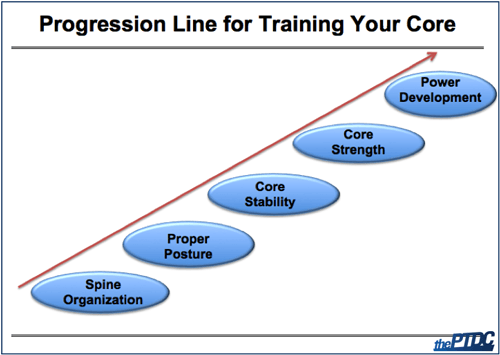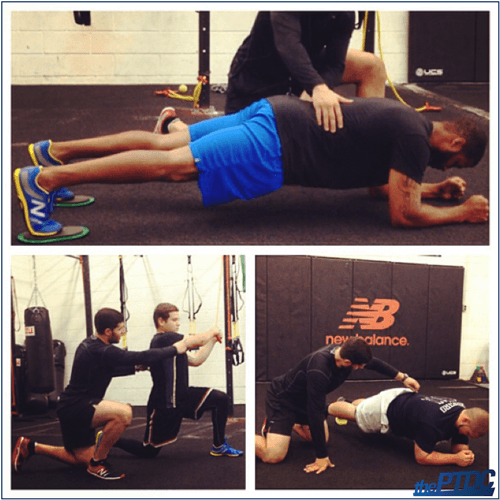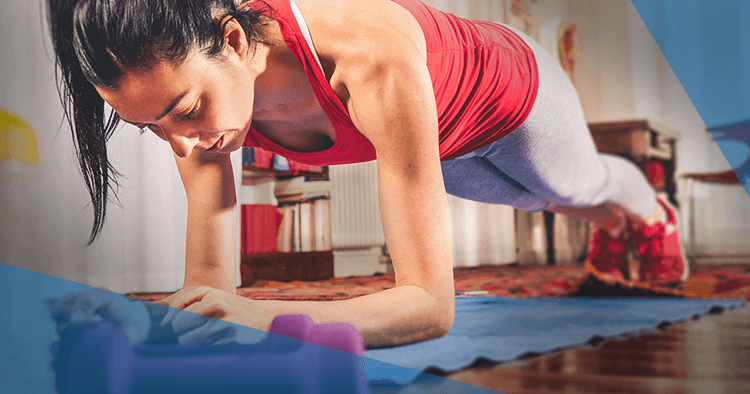Stop doing crunches and sit-ups. You may be causing more harm than good. And besides, they're not the best core strengthening exercises anyway.
The general population typically views the core as "six-pack abs," which they all need. Truth be told, the muscles on display aren't the most important.
The Most Important Core Muscle You Don't Know About
Let me introduce you to the transverse abdominis (TrA) muscle. Or, as it's sometimes referred to, the "money-maker."If you can properly engage this area, you'll have a much healthier spine and lower back moving forward.
The TrA is beneath your rectus abdominis (the "six pack" muscle), and is often overlooked, despite its important role.
Most people struggle to engage the TrA. Here's a simple way to do it:
- Lie on a flat surface, such as your bed or the floor.
- Now imagine pulling your belly button up and into your spine.
- Don't hold your breath. You should be able to carry on a conversation while engaging this muscle.
- For starters, engage the TrA for five seconds at a time. Relax, and repeat. Work up to 20 reps.
Train the Function of Your Core, Not the Anatomy
So, you still do crunches and sit-ups and wonder why your client's lower back still hurts?
Think about it: When you perform biceps curls, you can literally see your biceps contract and shorten. The muscle prefers a slightly shortened position, as opposed to being stretched or elongated.
Why wouldn't your anterior core muscles act the same way? Muscles are muscles. They stretch and shorten.
The problem is, shortening those core muscles makes things worse for your body, not better. Spine-flexing exercises like crunches and sit-ups give your facet joints and vertebral discs a beating. The same can be said for excessive extension.
READ ALSO: Here's What a Good Core Workout Really Looks Like
What's the Purpose of Your Core?
All the muscles in your core and lumbopelvic hip complex work in tandem to provide protection for your spine, specifically at the lumbar segments in your vertebral column. Most notably, these areas protect your spine by resisting rotation, flexion, and extension.
Of course, we perform rotation, flexion, and extension all the time in our daily lives. The goal isn't to avoid them. It's to ensure we do those movements safely and effectively.
Your first goal is to organize your spine and find a posture that feels best for your body.
Your next goal is to achieve proper core stability. If you can stabilize the muscles in your core in the presence of movement, you'll have a healthier and happier lower back.
After that, you can emphasize core strengthening by adding external resistance: medicine ball, resistance bands, cables, Valslides, etc.
The final step is to integrate explosive movement patterns into your core training to develop power.

To illustrate how it works in practice, think of a basic core exercise like the plank hold. It forces you to brace your core muscles, create full-body tension, and hold a static position while resisting the forces of gravity on your body weight.
READ ALSO: Five Steps to Superior Core Training
It's considered an anti-extension exercise because you're working to prevent your lumbar spine from sagging down toward toward the floor.
Even though I just described it as a basic exercise, there's a lot going on. It'll take a while for your clients to develop the strength and coordination needed for full-body tension, and without that tension they can't achieve core stability. But it's imperative to learn how to stabilize the core before adding elements of strength and power.
Progressions in Core Strengthening Exercises

Some examples of core strengthening exercises. Videos below
I specifically selected core strengthening exercises in each progression, from basic to advanced, that would be challenging while also properly enforcing the key concepts and functions of the core.
I recommend mastering the exercises in each section before moving forward along the progression line.
Basic Level Core Strengthening Exercises
This category includes three exercises:
- Plank hold
- "Hips don't dance" mountain climber
- Dead bug
Intermediate Level Core Strengthening Exercises
Once your client has mastered the three basic exercises, you can progress to these four:
- Perfect posture rotating plank
- Half-kneeling chop
- Anti-rotation Pallof press and overhead raise
- Plank body saw with Valslides
Advanced Level Core Strengthening Exercises
For the few clients who master the intermediate exercises, you can move on to these three advanced movements:
- Side plank hold to row with hip flexion
- Half-kneeling medicine ball wall toss
- Bottoms-up kettlebell waiter's hold with dumbbell suitcase hold
Remember that the primary goal is to train the function of the core, not the anatomy. By following these progressions, you'll not only help your clients improve their health and performance, you'll make their workouts more fun and challenging.









